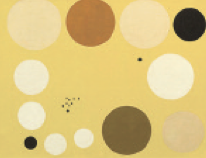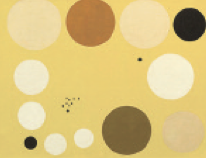FOUNDATION : Juan March
“Cold America”, Latin American Geometric Abstraction
The Juan March Foundation inaugurated in its Madrid headquarters the exhibition “Cold America. Latin American geometric abstraction (1934-1973)”, in order to map, in a fast and systematic way, the complex history of geometric abstraction in Latin America.

The resulting map shows how Latin American abstract artists were influenced by artists from the Old ontinent, as well as the decisive rupture with the artistic European tradition: the renovation and the differentiated character that geometric abstraction assumed in Argentina, Brazil, Colombia, Cuba, Uruguay, Venezuela and Mexico.
The exhibition is composed of about 300 works (including art works and documents, some of them never before seen outside of their countries of origin) by more than 60 artists from the aforementioned coun- tries, and will run in Madrid until 15 May. The works come from museums and private collections in Europe, the United States, and Latin America, in the biggest effort ever made to collect the best pieces of the best exhibitions with the purpose of con- structing a panoramic vision of the abstract currents in the American continent.
This project from the Juan March foundation, curated by Osbel Suárez has included the participation of some of the most prominent Latin American artists and art scholars, such as Ferreira Gullar, César Paternosto, Luis Pérez Oramas, Gabriel Pérez Barreiro, María Amalia García and Michael Nungesser, among others. The catalogue (available in English and Spanish) that accompanies the exhibition, profusely illustrated and documented, extends the panoramic view of the exposition to those who are interested in the art of a continent that is still widely unknown to the greater public. In addition to essays by country by renowned specialists, it also includes a detailed chronology of the abstract movements in Latin America, biographies of the selected artists, and a critical edition of a selection of documents that are relevant to under- standing and contextualizing a phenomenon of the geometric abstraction: manifests, articles, correspondence, and diverse documentation, partly never exhibited before, and loaned from museums, universities, public and private archives, and docu- mentation centers in Brazil, Argentina, Cuba, and Spain.




